
All categories
Featured selections
Trade Assurance
Buyer Central
Help Center
Get the app
Become a supplier

(2230 products available)



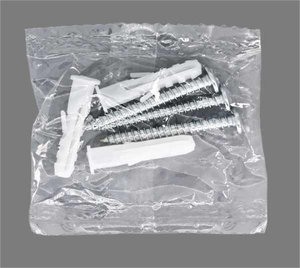












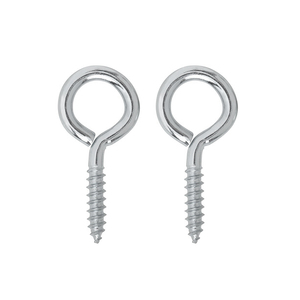






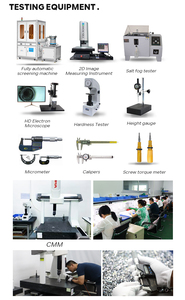
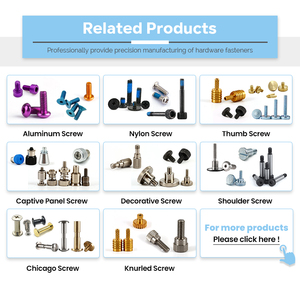













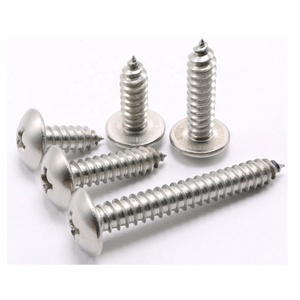


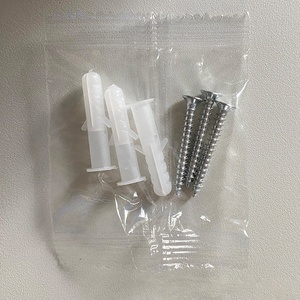








Light fixture screws are important small parts of a lighting system. They come in different styles and are necessary for fixing light fixtures. They help keep the fixtures installed properly, support their weight, and avoid electrical problems. Here are some common choices for light fixture screws:
Wood screws are ideal for light fixture mounting on wooden surfaces. They have sharp threads that dig into the wood and provide a strong hold. The tapered body helps drive the screw deep for a flush finish with the fixture. Carpentry and woodworking shops need wood screws as they commonly handle wood installations.
Machine screws are widely used in electrical products, including light fixtures. They have uniform threads designed to attach nuts or tapped holes. Round head machine screws mount light fixtures to junction boxes. Their strength withstands the heat and vibration of lighting.
As the name says, these screws work well for fixtures mounted to thin metal sheeting. The self-tapping design eliminates the need for pre-drilling. The tapered and sharp threads cut through sheet metal, providing a flush fit. They are found in lighting applications where the backing is metal.
Lag screws provide heavy-duty support by combining wood screw and bolt properties. The enlarged head allows for easy wrench fittings, while the thick, tapered body is made for structural installations. Overhead lighting attached with lag screws handles weighty fixtures without falling. These screws are preferred when mounting fixtures from beams, trusses, or ceilings requiring unusual loads.
The primary function of drywall screws is to attach gypsum boards to metal or wooden studs. The special thread pattern, with deeper grooves and shallower spirals, allows the screw to securely hold the board in place without stripping. Their affordable cost makes them a practical choice for light fixture installations where the fixture needs to be connected to a drywall ceiling or where an aesthetic flush finish with ceiling drywall is desired. These screws are generally found in constructions where drywall ceilings are common since they provide an easy and safe fixture mounting option.
The reliability and structural strength of fixture screws make them essential in various industrial settings, such as factories, warehouses, and commercial buildings. Proper screw selection based on the fixture and application is vital for safe and energy-efficient lighting. Here are the various industrial applications of light fixture screws:
In the production plants where machines create vibration, stronger screws like machine or lag types are needed. Fixtures here use high-power bulbs, making screws withstand heat and constantly hold up. Poor securing leads to accidents or power cuts, so sturdy screws are key.
In stores, malls, and offices, many people go through their spaces. Snap screws always fix the fixtures firmly. Retail places can't have lighting fail and disrupt business. Proper screw use keeps the fixtures attached and helps with a safe atmosphere.
Warehouses have big shelves and machines stacking items. The light fixtures guide workers around safely. That is why they need substantial screws making the fixtures stable. Lag screws mount fixtures on beams and ceilings so things will not shake while working in the warehouse.
Inspection areas need enough illumination for workers to spot problems on parts. If fixtures do this badly, harm comes to the workers and products. Proper screws for interior fixtures mean there will be no darkness in places work gets done.
Large outdoor areas like parks or yards also require stable light fixtures. Screws like sheet metal types for securing outdoor fixtures withstand weather elements like rain, wind, or snow. They ensure pathways and work areas stay illuminated even after storms, helping vision and safety not to go away.
Utility companies keep power lines, and light fixtures along the way help with repairs. The screws matter again here, ensuring each fixture stands up in storms while workers fix lines below. This builds safer work zones and cuts down downtime over tied-together lighting that shakes around.
Parking garages necessitate secure ceiling-mounted light fixtures for safe driving and walking. The screw types like drywall or machine are best for concrete or metal locations where people travel. This stability guarantees all areas of the garage remain bright enough not to trip or crash into anything.
As light fixture screws come in several types, here are their common specifications and features:
Materials from which light fixture screws are made include steel, brass, and stainless steel, as well as carbon. Steel screws are incredibly durable and often used for heavy fixtures. Brass screws resist corrosion and oxidation; they are mainly used for decorative fixtures. Stainless steel is corrosion-resistant, making it ideal for wet or humid spaces.
Screw coatings also differ. Galvanized and chrome-plated screws are water and moisture-resistant. Black oxide-coated screws can help with lowering glare, which is helpful for lighting purpose. Powder-coated screws usually provide a decorative finish also with extra corrosion resistance.
Head types vary based on the fixture and application. Flathead screws drive flush with the fixture for a clean look. This allows a light fixture to sit very close to the mounted surface. Raised head types leave a gap so the fixture sits away for better airflow or design reasons. Tithmetic heads require specific drivers to limit tampering, usually in public areas.
Drive types available include slotted, Phillips, square, and star. Phillips drives permit even torque distribution as the driver slips if over-torqued, reducing stripping. Slotted drives are easy but strip more often. Square and star offers better torque but need special drivers.
The appropriate length and gauge depend on fixture weight and mounting surface. Short screws are enough where fixtures mount to drywall. Longer screws work better when mounting fixtures on beams. The gauge measures screw thickness; higher numbers mean narrower screws. Larger screws provide extra stability for heavier fixtures. These screws allow securing fixtures firmly to ensure they perform reliably while handling vibrations, weight, and environmental conditions.
Here are some tips for choosing a screw for a light fixture:
Different types of light fixtures need different screws. Chandeliers with brass accents will utilize flathead brass screws for a flush, elegant finish. Industrial-led lights require robust machine screws for a secure fit given their heavy weight. Always refer to a fixture manufacturer's installation instructions so only the recommended fasteners get used.
Also, consider what the fixture is made of. For example, use stainless steel or galvanized for fixtures in humid or coastal regions because of their water resistance. Interior fixtures attached to drywall may use lighter material screws, while exterior ones need something that can resist weather elements like wind and rain.
Pick the right head and drive style. A slotted head gives an easy drive, but Phillips provides even torque. Star drives prevent stripping for tamper-prone areas. Ensure the driver with the screw matches the fixture.
Screw length depends on the mounting surface. It should penetrate at least into the surface by the same depth as the fixture.
Higher gauge number screws are thinner; they are best for lightweight fixtures. Conversely, low number screws work for heavy-duty fixtures since they have a larger diameter.
Coated screws offer extra properties. Chromed brass or powder-coated screws improve the look and resist corrosion. Plastic-coated screws even minimise electrical conductivity to avoid fixture overheating. Coatings add protection to the weather and wear.
A1: Using incorrect screws may have different impacts. First, the wrong screw type may fail to support the fixture weight. This implies that the fixture will not be properly secured. Second, using unsuitable materials may create galvanic corrosion.
A2: There are many ways to maximise the lifespan of light fixture screws. One of them is to use the right screws. Using material that is ideal for the environment will help. Secondly, one should avoid over-tightening. Overdoing it will damage the fixture. It will also strip the screw or the mount.
A3: The common mistakes people do are choosing the wrong screw size. Using screws that are too long or too short will cause many issues. A too-long screw can penetrate too far into the fixture. A short one will not secure it properly. People also ignore the corrosion issue.
A4: There are various ways to choose the right screw size for light fixtures. The manufacturer of the screws will provide guidance. One should follow their instructions. The materials of the fixture and the mounting surface will also help determine the screw size.
A5: Yes, the screw's coating affects its functionality. A coating like chromes increases the screw’s resistance to corrosion. Powder coatings also help to prevent the screw from rusting. Plastic coatings are great for electrical insulation.